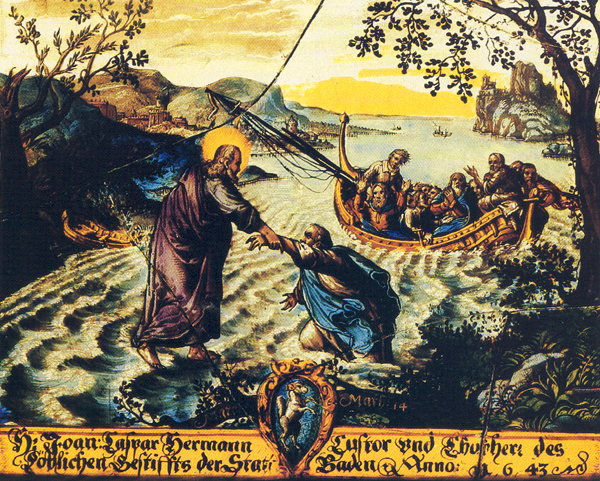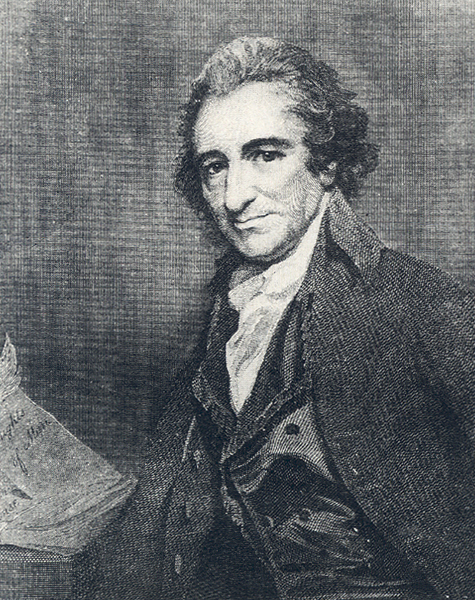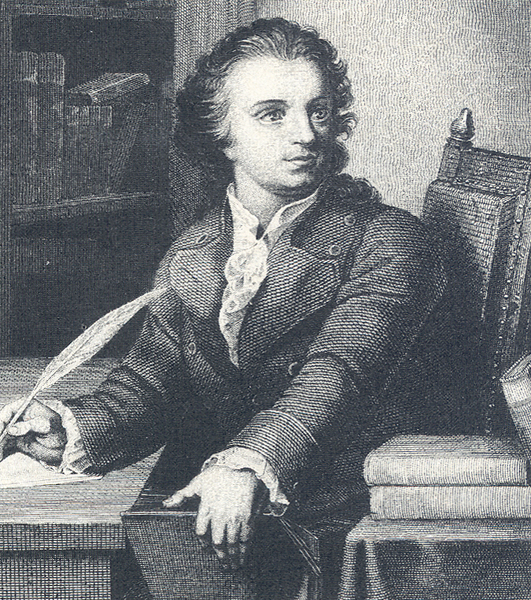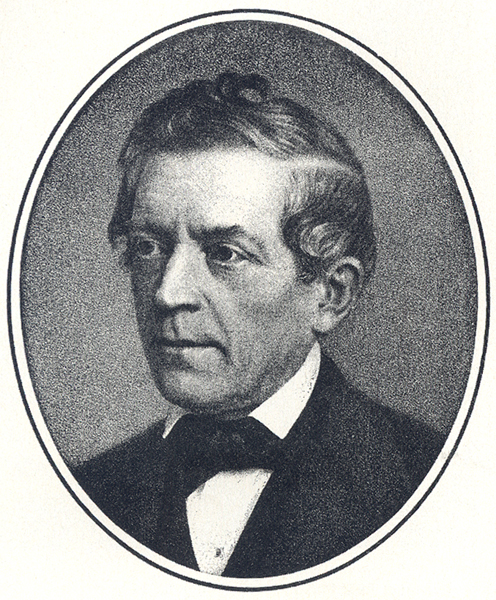
More than two centuries ago, it occurred to a few European intellectuals that Jesus as a figure of history may have been quite different from Jesus as portrayed in the Gospels. With the awareness of that potential difference, the scholarly quest for the Jesus of history began.
At that time and in that world, biblical criticism was regarded as a threat to religion and the church. In 1697 an 18-year-old Scottish student named Thomas Aikenhead was hanged in Edinburgh for claiming that Ezra, not Moses, was the author of the Pentateuch (the first five books of the Bible). Some 30 years later, in England, Thomas Woolston, a professor at Cambridge, was given a considerably milder sentence: a year’s imprisonment for his claim that the miracles of Jesus had not happened. Near the end of the 1700s, in The Age of Reason, Thomas Paine of Revolutionary War fame denied the truthfulness of both the Old and New Testaments. His publishers in England were heavily fined and sent to prison.1

Aikenhead, Woolston and Paine lived at the dawn of a new era, that period of Western intellectual history known as the Enlightenment. For more than a millennium before the Enlightenment, the Gospels and the Bible as a whole had been understood as divine documents whose truth was guaranteed by God. Therefore, it was taken for granted that the history they reported had happened as recorded. It was simply assumed that Jesus as a historical figure was the sum total of everything said about him in early Christian tradition.
This is not to say that every passage was understood as literally true. Theologians and Bible scholars before the Enlightenment could find the “spiritual” or “allegorical” meaning of a text to be more important than the literal meaning, and they could even deny the literal meaning of some texts. For example, Origen (early third century) commented that no mountain existed from which Satan could show Jesus all the kingdoms of the earth (Matthew 4:1–11//Luke 4:1–13) and therefore something else must be meant. In a similar fashion, Luther denied that Adam and Eve had heard God walking in the Garden of Eden in the cool of the day (Genesis 3:8). God never walked in a garden, Luther said; instead, Adam and Eve must have heard the wind. Nature, which had previously seemed benevolent, had become a source of fear.
The guiding principle before the Enlightenment, however, was that if the text purported to describe something that had happened or had been said, then it was taken for granted that it was true. Within this view of Scripture, what Jesus was like could be known simply by combining all that Scripture said about him.2 No distinction had yet been made between Jesus as a historical figure and the Jesus of the Gospels. Identifying the Jesus of history with the Jesus of Christian tradition was not even a matter of faith. It did not require “belief,” but was as self-evident to our ancestors as the heliocentric solar system is to us.
The revolution of knowledge engendered by the Enlightenment changed everything. No longer could something be accepted as “true” simply on the basis of authority and tradition. Investigation and reason became the new basis for knowledge. Initially applied in the natural world of the sciences, this new way of knowing was soon applied to the study of the human world of history and culture.
In religion and theology, the early bearers of the Enlightenment were the Deists. Like their counterparts in the sciences, they consistently sought “reasonable” and “natural” explanations. Though the Deists still affirmed the existence of God, they rejected the notions of supernatural intervention and special revelation. With these gone, the privileged status of the Bible and of Christian doctrine also vanished. Scripture and doctrine alike were seen as human products, not as the supernatural revelation of God.
Accompanying this was the rise of a new historical consciousness. The task of the historian was no longer simply to chronicle the events reported in authoritative documents. Rather, the historian now became the judge of historical documents, seeking to make discriminating judgments about “what really happened.”3
In this period the quest for the historical Jesus began. Its first dramatic episodes were set in the strange circumstances surrounding the posthumous publication in 1778 of Hermann Samuel Reimarus’s On the Intention of Jesus and His Disciples, the book usually cited as marking the birth of this quest.4
Reimarus (1694–1768) was born in Germany into a family of Lutheran clergy. As a young man he became familiar with Deist thought while studying in England and Holland. When he graduated, he returned to Germany and became a professor of oriental languages in Hamburg. He remained a practicing Lutheran in public, but privately and among friends he entertained very different thoughts. He was an enthusiast for the “new thought” of the Enlightenment, and his home became a center of intellectual life in Hamburg. Though he published during his lifetime, the book on Jesus for which he is famous was not published until 1778, ten years after his death.
Reimarus’s book was the first to mount a sustained argument for radical discontinuity between the Jesus of history and the Jesus of the Gospels. Reimarus did this by making a sharp distinction between the intention of Jesus during his lifetime and the intention of his disciples after his death. According to Reimarus, Jesus’ own intention was to proclaim a political kingdom of God, which involved inciting a rebellion against Rome.
Jesus’ death meant the failure of his mission, and it left his disciples in a difficult spot. Unwilling to return to their previous lives, which had been both hard and inconspicuous, they sought to find a way to keep the movement going. They did this by inventing both the resurrection of Jesus and the notion of the second coming in which Jesus would be the judge at the Last Judgment. In short, the post-Easter Jesus, and thus Christianity, were a fabrication created by the disciples of Jesus after his death.
Reimarus’s treatment of Jesus was part of a much longer manuscript, surviving in three handwritten copies of 1,050 to 1,300 pages, which was intended not for publication, but for private circulation among his friends. To tell the story of its publication and the controversy that followed, a second main character must be introduced, the brilliant critic and dramatist from the golden age of German literature, Gotthold Lessing (1729–1781). Lessing, who had studied theology in his youth, moved to Hamburg to direct a theater company in 1767, a year before Reimarus’s death, and became acquainted with Reimarus, his family and the manuscript.

After Reimarus’s death, and after Lessing’s own appointment as librarian for the Duke of Brunswick, Lessing sought to publish the manuscript but had to deal with two obstacles. Reimarus’s family insisted on anonymity because of fear of bringing shame upon the family name, and the duke prohibited publishing works detrimental to religion. In this, the duke was like the magistrates of Edinburgh and Cambridge, using the power of the state to support traditional religious beliefs. We do not know the duke’s motives—personal conviction, benevolent concern to protect the public from having their beliefs disturbed or self-interested desire to preserve established authority.
Lessing overcame both obstacles by publishing portions of Reimarus’s manuscript in a series of seven installments under the pretense that they were fragments of a manuscript by an unknown author discovered among the treasures in the duke’s library. The seventh fragment was Reimarus’s treatment of Jesus. Thus the work that marks the birth of historical Jesus scholarship was published both posthumously and anonymously.
With its systematic questioning of the historical accuracy of the Gospels, its portrait of Jesus as a political radical and its claim that Christianity was contrived by conniving disciples, Reimarus’s book aroused a strong reaction from both ecclesiastical and secular authorities. So intense was the controversy that Reimarus’s family kept secret the book’s authorship until his son finally disclosed it in 1814 near the time of his own death.
In the United States during this same period, Thomas Jefferson engaged in his own quest for the historical Jesus. While still president, he sat up late at night seeking to separate the legendary from the historical in the Gospels. His first effort, which he called “The Philosophy of Jesus,” was completed in 1804. He later expanded it into “The Life and Morals of Jesus of Nazareth” (1820), which was finally published as a small book in 1904 and distributed to all members of Congress. It is amusing and perhaps instructive to imagine what the public reaction would be today if a president embarked on such a project.
In Europe, in 1835, David Friedrich Strauss published his Life of Jesus. This two-volume work, some 1,400 pages long, was published when Strauss was only 27 and a tutor in theology and philosophy at the University of Tübingen.5

Strauss’s book focused on the issues of miracle and myth. Since the beginning of the Enlightenment, with its rejection of supernatural intervention and its affirmation of a natural order governed by natural laws, the question of miracle had become central in theological debate. Rationalists and traditionalists lined up on opposing sides.
Before Strauss, rationalist scholars had argued that the miracle stories in the Gospels were not really miraculous, but had natural explanations. For example, though the disciples thought they saw Jesus walking on the water, he was really walking on a row of slightly submerged rocks. In the feeding of the 5,000, the generosity of the young boy in sharing his five loaves and two fishes led the rest of the crowd to share the provisions that they had brought with them. The stories were accepted as reports of something that had happened, but with natural explanations.
Traditionalists, on the other hand, argued that the miracle stories were to be understood as really being what they appeared to be: historical accounts involving direct supernatural causation. Indeed, among some, the miracles were used as proof of the divinity of Jesus: Only somebody who was divine could do such things.
Strauss rejected both the rationalist and traditionalist approaches. He argued that the miracle stories in the Gospels were not to be understood as historical in the sense of reporting something that happened, whether naturally explained or supernaturally caused. Rather, the miracle stories were to be understood as mythical narratives created by Jesus’ followers, who used the language and symbolism of the Jewish Scriptures to express their conviction that Jesus was the Messiah. The “miraculous” as history thus disappeared from the story of Jesus, even though the miracle narratives remained meaningful as myth.
Opposition formed quickly. One reviewer called Strauss’ work “the most pestilential book ever vomited out of the jaws of hell.” Another referred to it as “the Iscariotism of our time.”6 The book cost Strauss his university career. Dismissed from Tübingen, he was hired at Zurich, but his views were so notorious that over 40,000 people signed petitions opposing his appointment. He was pensioned off before he gave his first lecture, and he never held another university position.
Throughout the 19th century, the struggle continued between traditional beliefs about the Bible and the new knowledge generated by the outlook inherited from the Enlightenment. Evidence accumulated by geologists pointed to the great age of the earth, astronomy pointed to the vastness of the universe, Darwin and others argued for the antiquity of human life and its emergence from earlier forms of life, and biblical scholars continued their investigation of the biblical texts and the history—or lack thereof—behind the texts. Controversy shook the church, and there were heresy trials and threats of heresy trials.
In England a very moderate book of biblical criticism, Essays and Reviews, was published in 1860. Written by seven authors, six of whom were Anglican clergymen, the book created a storm. Within months, 11,000 clergy had signed petitions of protest, and two of the seven authors were prosecuted and suspended from their positions for a year.7 In a book published in 1862, Anglican bishop John William Colenso argued that the Pentateuch was not written by Moses, but came from a much later period in Israel’s history. Colenso was consequently deposed and excommunicated.8
Similar events occurred in the United States. Alexander Winchell, a respected professor of geology at Vanderbilt University, was dismissed from his chair in 1875 because his views about the age of the earth conflicted with Genesis.9 In 1893, in the most famous heresy trial of the century, Charles Briggs, an Old Testament professor at Union Theological Seminary in New York City, was suspended from the Presbyterian ministry, leading Union to sever its connection to the Presbyterian church. A year later, Henry P. Smith, a professor of Old Testament at Lane Seminary in Chicago, was similarly dismissed from the ministry by his denomination.10 It was a tumultuous century for theology and biblical scholarship.
The controversy over the Bible also generated a new kind of biblical literalism, which the 20th-century Protestant theologian Paul Tillich calls “conscious literalism.” Before the Enlightenment, most Christians were what might be called “natural literalists”; that is, they took the literal approach to the Bible for granted simply because no other approach had occurred to them. Their lives were nourished by this way of reading the Bible, and the literal approach was not an obstacle.
But conscious literalism is very different: It is a literalism that has become conscious of other possibilities and rejects them, This kind of literalism sought to deny the impact of the Enlightenment (and biblical criticism) by exempting the Bible from treatment as a human document. By insisting that God gave the Bible’s exact words, conscious literalism claimed for the Bible an immunity from criticism and a supremacy over all other kinds of knowledge. Ultimately this kind of literalism gave birth to fundamentalism, which is an early 20th-century movement and not the ancient position of the church.
Conscious literalism, while seeking to be faithful to the Bible, actually profoundly changed the church’s doctrine of the Bible as the Word of God. The church has always affirmed that the Bible is the Word of God (with “Word” in the singular and capitalized); conscious literalism in effect understands the Bible as if it were the words of God (lowercase and plural). It therefore sees modern knowledge and biblical scholarship as the enemy of the Bible.
It is difficult for us living near the end of the 20th century to understand the furor caused by the Enlightenment’s challenges to traditional belief. Though the results of biblical scholarship in general and of Jesus scholarship in particular still occasionally make the news, they generally do not cause scandalous offense.
But in the 18th and 19th centuries, what was at stake for many was nothing less than the foundation of their world. It was the world of Christendom, that wedding of Christianity and culture that dominated the Western world until recently.11 In that context, critical scholarly study of Jesus and Christian origins seemed to tear apart the fabric of Western culture itself by undermining traditional authority, whether ecclesiastical, political, moral or spiritual. For many, it was not a big leap from questioning the literal truthfulness of the Bible to the complete collapse of a stable political and moral order. Politically speaking, “free-thinking” and the threat of revolution went together. So also in the realm of morals: To many it seemed that if Jesus did not really walk on the water, then nothing was for certain, and anything was permitted.
In our time, biblical criticism is no longer perceived as a threat to culture itself. Indeed, it is not even perceived as a threat within large segments of the church. Mainline Protestant denominations as we as the Roman Catholic Church have given their blessing to it. Even Reimarus and Strauss have become part of mainstream biblical scholarship, Though many details of their work have been rejected, Reimarus’s central claim (that there is a sharp distinction between the Jesus of history and the Jesus of the Gospels) and Strauss’s central claim (that many of the miracle narratives are to be read as myth rather than as history) have become foundational for mainstream Jesus scholars, Christian and secular. Many Christians have found their understanding of what it means to be a Christian greatly enriched by the insights generated by biblical scholarship. Rather than experiencing biblical criticism as corrosive of faith, they find it to be an ally.
In our time, when biblical criticism is experienced as threatening, it is as a threat to private religious belief. Controversy over the Bible has become a personal and sometimes sectarian smatter, not an issue that vexes the culture as a whole. I use “sectarian” in a descriptive and not negative sense to indicate that “the battle over the Bible” now goes on in sectors of our culture rather than in the culture as a whole.a This change reflects a deep change in Western culture and consciousness, pointing to the pervasive secularization and pluralization that mark the modern world.
But in the early days of the Enlightenment, it was not so. Biblical criticism was cultural criticism. It required both intellect and courage. To be able to “see” from a vantage point outside of the conventions of culture is an intellectual accomplishment in any age. To be willing to face the cultural outrage engendered by such a point of view is the stuff of which the heroic is made. Whatever their personal faults and limitations, the pioneers of biblical criticism were heroes of the Enlightenment.
MLA Citation
Footnotes
Endnotes
For these episodes and others, see W. Neil, “The Criticism and Theological Use of the Bible, 1700–1950,” in The Cambridge History of the Bible, ed. S.L. Greenslade (Cambridge, UK: Univ. Press, 1963), vol. 3, pp. 238–293.
See the comment of Craig A. Evans, “Authenticity Criteria in Life of Jesus Research,” Christian Scholar’s Review 19 (1989), p. 6: “Prior to the critical period of biblical studies, canonicity was the only test for determining the authenticity of the sayings of Jesus. What was in the New Testament was authentic; what was not in the New Testament was suspect.”
For this change and its effect on theology and Scripture, see especially Van Austin Harvey, The Historian and the Believer (New York: Macmillan, 1966).
Albert Schweitzer’s famous The Quest of the Historical Jesus, published in German in 1906 and in English in 1910 and still the most widely read account of the quest, begins with Reimarus. For this period, see also Colin Brown, Jesus in European Protestant Thought: 1778–1860 (Grand Rapids, MI: Baker Book House, 1985). For a compact survey of the quest, see N. Thomas Wright, “Jesus, Quest for the Historical,” in The Anchor Bible Dictionary, ed. David Noel Freedman (New York: Doubleday, 1992), vol. 3, pp. 796–802.
For a recent English translation, see D. F. Strauss, The Life of Jesus Critically Examined, transl. Peter Hodgson (Philadelphia: Fortress, 1972), first translated into English in 1846 by George Eliot (Mary Ann Evans).
Cited by Schweitzer, Quest of the Historical Jesus, p. 97, and Jesus, ed. Hugh Anderson, (Englewood Cliffs, NJ: Prentice-Hall, 1967), p. 108.
Neil, “The Criticism and Theological Use of the Bible,” pp. 281–283; Andrew White, A History of the Warfare of Science with Theology in Christendom (NY: George Braziller, 1955 [1896]), vol. 2, pp. 341–348; Stephen Neil and Tom Wright, The Interpretation of the New Testament 1861–1986 (Oxford: Oxford Univ. Press, 1986), pp. 31–34.
Claude Welch, Protestant Thought in the Nineteenth Century (New Haven, CT: Yale Univ. Press, 1985), vol. 2, pp. 166–167.

